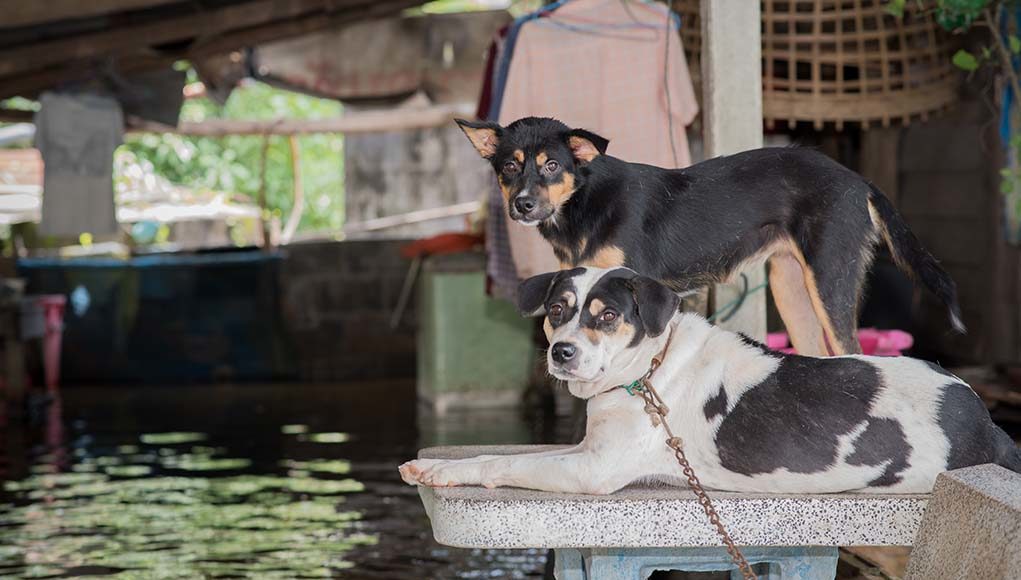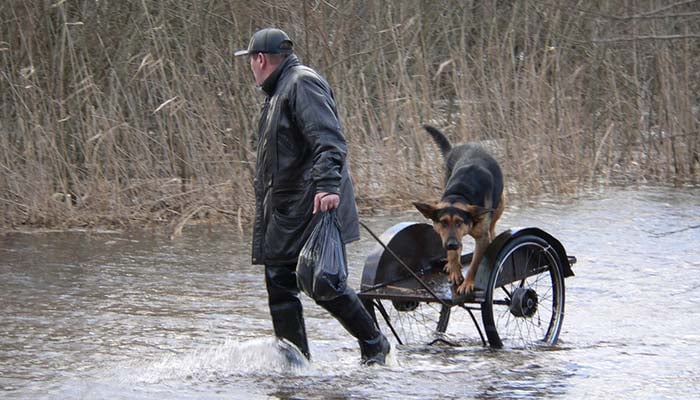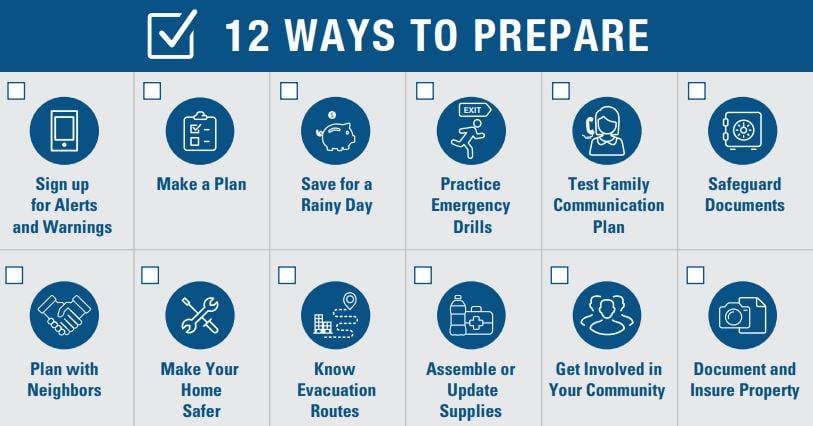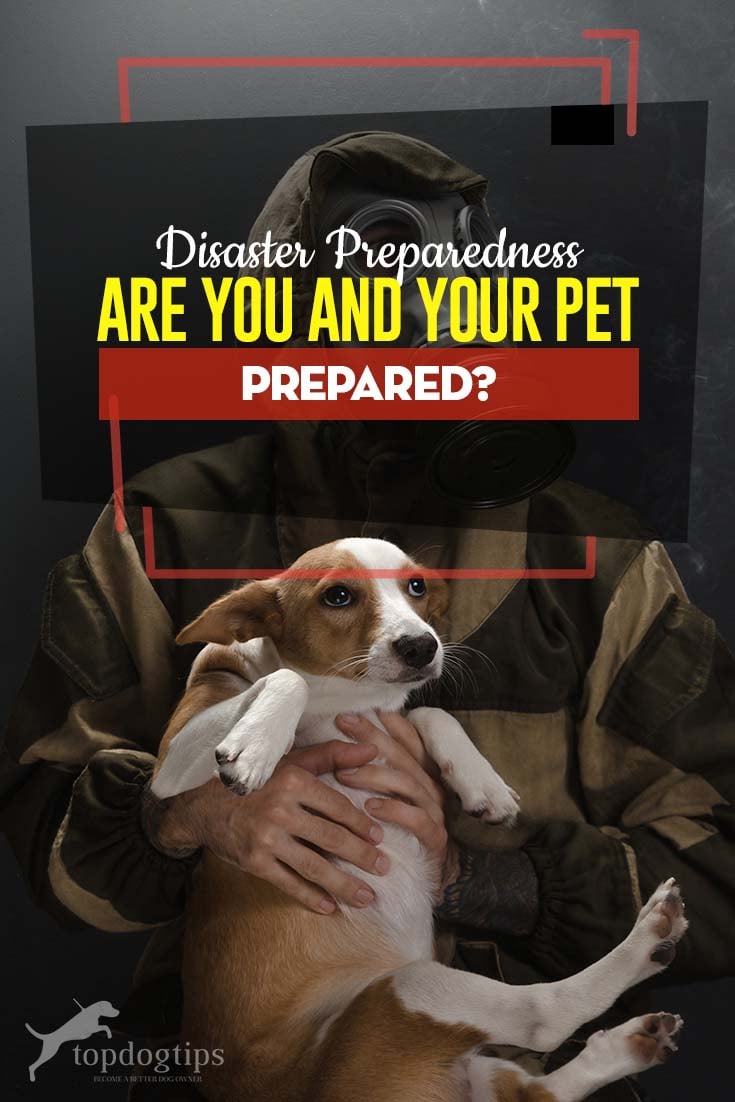Disaster preparedness is something that many of us don’t think about until it’s too late. In light of the devastating natural disasters we have experienced last year, however, we think it’s time that we all got ourselves and our pets a little more prepared. Even if you manage to get yourself and your family out, you wouldn't want to have your dog left behind in a forest fire.
What Does Disaster Preparedness Mean?
Disaster preparedness refers to any measures that you take to:
- Help you to avoid any disaster that is approaching.
- Lessen the impact of a disaster when it does hit.
- Mitigate the effects of a disaster when the disaster has passed.
What qualifies as a disaster:
A disaster is any sudden and catastrophic event that disrupts the “normal” functioning of a community and causes “human, material, and economic or environmental losses that exceed the community’s ability to cope using its own resources,” according to official IFRC classification.
(VULNERABILITY + HAZARD) / CAPACITY = DISASTER
Although we often categorize disasters as being “acts of God” or “natural events”, they can be the result of human actions as we recently saw in some of the California wildfires that were sparked by negligence.
Examples of disasters include:
- Avalanches
- Blizzards
- Droughts
- Earthquakes
- Fires
- Floods
- Heatwaves
- Ice storms
- Landslides
- Tornadoes
- Tropical cyclones
- Tsunamis
- Volcanic eruptions
ALSO READ: 17 Essential Items to Have in Your First Aid Kit for Dogs
Disaster Preparedness for Pet Owners
Creating a Disaster Preparedness Plan
The most important step in preparing yourself and your dogs or cats for any disaster is to have a plan in place. The purpose of this is so that everyone understands what they need to do to facilitate a safe evacuation or safe passage through the disaster.
You will find a disaster preparedness plan outline on the government’s “Ready” website that will help you to create a customized plan that considers your family’s specific needs, all according to FEMA recommendations.
Categorizing Preparedness
When preparing for any one of these disasters, there are multiple categories of preparations to be made, including:
- Gathering basic supplies.
- Compiling contact information.
- Compiling important records and documents.
- Preparing your home for the approach of the disaster.
Basic Supplies and Disaster Preparedness Kit
As a pet owner, gathering basic supplies to create your disaster preparedness kit means doing so for you, your family, and your dog or cat. That means that in addition to including the items listed on the government’s Ready.gov disaster preparedness kit checklist, you also need to gather together supplies for your pet, including:
- At least three days’ worth of your pet’s food stored in an airtight and waterproof container.
- At least three days’ worth of water for your pet’s needs.
- All medications your pet needs to take (don’t forget to refill these ahead of time!)
- A crate or travel carrier.
- Waste bags, paper towels, and a bleach-based cleaner. (Some families keep these items in a litterbox that can be used as a designated potty area if they are trapped in a confined space.)
- A pet first aid kit with items specific to your dog or cat (for example, nail clippers, vet wrap bandage, first aid glue, a snake bite kit if pertinent, etc.)
- A spare collar, harness (a harness with a handle along the back is best) and leash complete with an identification tag.
- A clear photograph of your pet as well as a photograph of you and your pet together.
- Treats that can be used to lure your dog if needed.
- Bedding for your dog.
- A favorite toy for comfort and that can be used as a lure if needed.
- A pet first aid reference guide.
Compiling Contact Information
When preparing for a disaster with your pet, be sure that you have all of your contact information in one location. Most of us rely on our phones to store this information, but if your phone battery dies or your phone gets lost or damaged, you need to be able to access emergency contact information another way.
We recommend keeping a traditional phone/address book as well as keeping digital copies of this information on a small flash drive and keeping both of these items in a safe airtight, waterproof container. Some of the contacts that you should include in your address book as well as your flash drive include:
- Your spouse/child/parent’s contact information if you don’t know it already!
- Your doctor
- The three nearest hospitals
- The three nearest urgent care facilities
- Your veterinarian
- The three nearest veterinary hospitals
- The three nearest emergency veterinary hospitals
- Your local police station
- Your local fire station
- Designated emergency shelters in your area
- Contact information for someone who can care for your pet in the event that something should happen to you.
- The Red Cross
- The American Humane Society
- Your primary emergency contact
- Three other emergency contacts
- The Pet Poison Helpline
- Numbers for family and friends whom you may need to contact either for help or to notify them that you are safe
- Contact information for local utility companies
- Contact information for other monthly bills
Compiling Important Records and Documents
In addition to compiling your emergency contact information, it’s important to pull together any important records or documents related to you, your family and your pets. You will need to protect them from being destroyed in the disaster. Such records include:
- Pets' veterinary records and vaccination records including a current medications list, any allergies, and a copy of your veterinarian’s contact information (if you didn’t already include them in your pet’s disaster kit)
- Personal medical records including a current medications list, any allergies, and a copy of your doctor’s contact information.
- Birth certificates
- Passports
- Driving licenses
- Marriage licenses
- Social security cards
- Deeds to any property you own
- Medical identification cards
- Any visa, naturalization or citizenship papers
- Prescription cards
- Adoption certificates
- Titles to vehicles or other property
- Microchip registration paperwork or in the very least a copy of your pet’s microchip ID number
- A photograph of everyone in your family including your pets
- Financial account information
- Income verification
- Proof of certification for any training completed by your dog
- Any paperwork issued in support of an emotional support animal
- Insurance paperwork including pet insurance, homeowner’s insurance, vehicle insurance, life insurance, and health insurance.)
- Any legal documents including your will, account information for trusts, your power of attorney, a living will, etc.
Preparing Your Home for the Approach of the Disaster
If given enough warning ahead of time, you also want to prepare your home for any approaching disaster. If you plan to evacuate you will want to:
- Bring inside any items outside the home that could be blown around, damaged, or dangerous to others.
- Boarding up windows and reinforcing doors.
- Turn off water and gas and electricity if instructed to do so by local officials.
- Reinforce garage doors.
- Set out sandbags around your home.
- Set your fridge and freezer to the coldest settings in case the power does go out.
- Unplug electrical appliances.
- Move important items to a safer area of the home where they are less likely to be damaged.
- Elevate furniture that may be affected by floodwaters.
If you have no choice but to stay in your home during a disaster (please heed all evacuation advice and don’t “ride it out at home” unless this is the only solution) you will want to take the precautions above, as well as:
- Have a generator on hand in a safe area of your home (don’t forget the gas for the generator!)
- Create a safe space within your home (for example in the event of a tornado, choose a closet without any windows in the interior of your home and store your emergency supplies there along with any bedding for comfort, your pet’s crate, and any other items you may need.
- An emergency escape plan if you need to evacuate your home during the disaster (consider whether you may need a fire ladder, emergency tools, etc. to escape your home if you become trapped.)
- Keep flashlights in every room in areas that will remain safe or dry (don’t forget the extra batteries!)
- Have an emergency radio on each floor of your home.
- Fill bathtubs and sinks with clean water.
It is also important that somebody knows that you are staying in your home if you have no option to evacuate in time, or if there are any pets left behind. This person may wind up being the only option you have to rescue yourself or your pets after a disaster has passed.
Evacuation
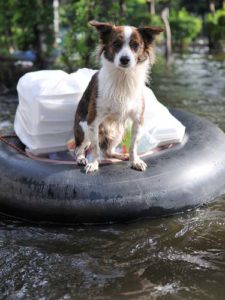 If you are given the option to evacuate your home before a disaster, always do so. It is far less difficult to evacuate your home with your pets in tow than it is to have to be rescued after a disaster or have to leave your pets behind.
If you are given the option to evacuate your home before a disaster, always do so. It is far less difficult to evacuate your home with your pets in tow than it is to have to be rescued after a disaster or have to leave your pets behind.
Be sure to listen to local news announcements so that you hear evacuation orders as soon as they come. You may even choose to evacuate before those orders if you feel that you are at risk of being hit by an oncoming disaster – this can help you to avoid some of the heavy evacuation traffic that may occur once evacuation orders have been given.
If you will be evacuating to another city or state with your pet, be sure to take all of your emergency contact information, medical information, and supplies with you. Start out as early as you can and be sure to plan your route taking any potential delays into account.
The last thing you want to do is evacuate your home at the last minute and find yourself stuck on the highway when the disaster strikes. Plan ahead, know how far you can be from “ground zero” when disaster is predicted to strike and know whether the roads are already too dangerous to risk evacuation due to precursory weather conditions.
Know that evacuation doesn’t have to mean leaving the state or even your local community, it can also mean going to your local emergency shelter where you will be safer in the event of a disaster.
The PETS Act
If you do plan to evacuate to a local shelter but are hesitant to do so because you don’t want to leave your pet’s behind, don’t be. In 2006 the PETS Act was passed to protect companion animals affected by natural disaster.
Passed shortly after Hurricane Katrina, the PETS act states that for “states, cities, and counties to receive federal funding for their disaster relief plans, those plans must account for the needs of individuals with household pets and service animals before, during, and following a major disaster or emergency.”
Since the act was passed, FEMA has been permitted to reimburse states for the creation of and maintenance of pet-friendly emergency evacuation shelters and any other evacuation preparedness that may be needed to account for companion animals in the event of an emergency. This has led to more states ensuring that pet-friendly shelters are set up for evacuees with their pets in tow.
Make sure that you research your state’s emergency shelters and know where pet-friendly shelters are in your location because it is not mandatory for all shelters to permit pets. Also, be sure to research what will be required of you and your pet when you arrive at the emergency shelter. Each shelter has their own guidelines but almost all of these include the need for a crate and accessible veterinary records.
READ NEXT: The Ultimate Guide of First Aid for Dogs – 7 Vital Things Every Dog Owner Must Know


